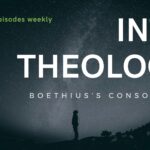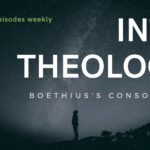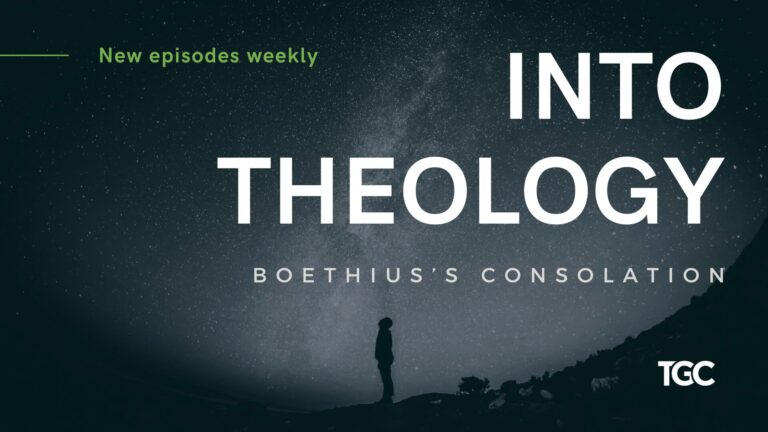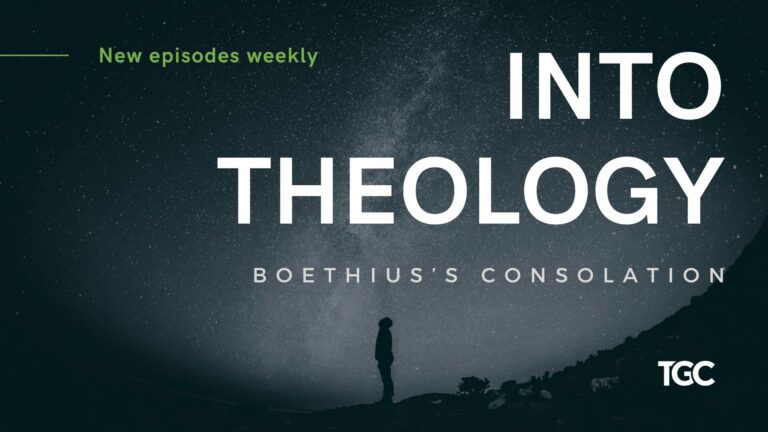Leonardo da Vinci [Public domain], via Wikimedia Commons
What happened to the church immediately after Jesus ascended into heaven? During the first twenty years of the church, no New Testament book was written. Paul only began writing about twenty years later, and the Gospels only began to appear about forty years after Jesus’ ascension. And although the book of Acts narrates key moments during this early period, it can still be hard to put together the picture that Acts paints. To give clarity to this period of the church’s history, here is a brief history of the first twenty years of Christianity.
The Last Forty-three Days before Jesus Ascends (A.D. 30)
Near the end of Jesus’ ministry, many had abandoned him. Yet a number of women, unnamed disciples, and the twelve stuck with him. But on the night of his betrayal, even his disciples fled from him. And Peter himself denied the Lord three times. From an outsider’s perspective, the Jesus movement looked like a failure. Jesus died a criminal’s death and his followers fled.
Yet many if not all of his disciples returned. And the risen Lord Jesus appeared to them in Acts 1:3. At this time, the apostle Paul seems to number the disciples to over “five hundred brothers” (1 Cor 15:6). This number seems to agree with John’s appraisal that “many of his disciples turned back and no longer walked with him” (John 6:66).
When we think of the Jesus movement, we need to think of a small band of faithful Jewish men and women. Most likely belonged to the peasant class, although Nicodemus was a Pharisee and some of the disciples had small fishing businesses, signifying some economic power.
But as a whole, Christians came from the middle and lower class. And they were a tiny group who were still considered (and would be for some time) a sect of Judaism. Yet this impression would soon fade away because Jesus did the unprecedented: he did not stay dead.
Instead, he appeared to and taught the disciples for forty days. Luke writes, “He presented himself alive to them after his suffering by many proofs, appearing to them during forty days and speaking about the kingdom of God” (Acts 1:3).
The Calm before the Storm of Pentecost (A.D. 30)
Jesus died during the Passover, rose three days later, and then taught the disciples for forty days. So, on the forty-third day, he ascended into heaven. One week later Pentecost came. During this week, one hundred and twenty disciples waited in Jerusalem at Jesus’ command (Acts 1:4). They “devoting themselves to prayer” (Acts 1:14) and appointed a twelfth apostle, Matthias, to replace Judas who betrayed Jesus (Acts 1:26).
After his resurrection, Jesus had appeared to over five hundred people and taught one hundred and twenty disciples for well over a month and still nothing had happened. A ragtag group of Jewish Jesus followers stayed in Jerusalem praying, many having left their jobs. And they waited. This tiny group of believers who likely relied on the generosity of a few patrons in Jerusalem.
Then the Holy Spirit came fifty days after Jesus died.
Conflict without and within (A.D. 30–33)
And Peter preached to a multitude who had gathered in Jerusalem. The church grew to about five thousand people (Acts 4:4) but not without opposition from the religious authorities (Acts 4). And far from being a pristine community, conflict crept in at the get-go.
Christians supported widows who had no other support structure at that time. The church provided social welfare for these women. But the Greek widows felt that the church privileged the Jewish widows (Acts 6:1). Immediately, the church responded to this inequality by appointing a special board to divvy the food equally. This group became the first deacon board of the church (Acts 6:1–6).
The church’s conflict continued because Steven, one of the seven deacons, was shortly thereafter murdered by a mob (Acts 7:54–60). Persecution spread to the whole church. Luke explains:
And there arose on that day a great persecution against the church in Jerusalem, and they were all scattered throughout the regions of Judea and Samaria, except the apostles. Devout men buried Stephen and made great lamentation over him. But Saul was ravaging the church, and entering house after house, he dragged off men and women and committed them to prison. (Acts 8:1–3)
Sometimes we conceive the earliest church as a fine-tuned machine. Yet it started with strife. The first decade evinced astounding growth which brought along internal conflict and external persecution.
During the first few years after Jesus ascended into heaven, Christianity mainly existed in Jerusalem and the surrounding area. But just as its legs got under its body, persecution came. And the still small church fled across the country. They scattered. And the idea of a Sunday service at the local church building was not even the radar.
Saul and presumably others were “ravaging the church,” going door to door to find traitorous Jews who had given up Moses and embraced Jesus.
The Call of Paul (A.D. 30–33)
After the murder of Stephen and the church’s exile from Jerusalem, Saul (who we know as Paul) rode to Damascus to continue persecuting Christians. Instead, he found the risen Lord on the way (Acts 9:23–25).
Saul’s conversation sent shockwaves across the Jewish landscape of Israel. In Damascus, he who had persecuted became the persecuted; and Paul had to flee the city. He ended up going to Arabia (possibly to Mount Sinai) for three years before returning to Damascus (Gal 1:16). He then returned to Jerusalem (Gal 2:18).
Years earlier, Paul had stood by while watching the murder of Stephen in Jerusalem (Acts 8:1). Now he returned to the city and preached Christ. So like Stephen before him, the mob attempted to murder Paul (Acts 9:29). So he fled to Caesarea and then to Tarsus (Acts 9:30). It would take another eleven years before Paul would start his missionary journeys (Gal 2:1).
Famine, Murder, and Schismatic Theology (A.D. 34?–47?)
With Paul converted and persecution alive across the region, one wonders if the situation could get any worse for the nascent Christian church. It did.
Agabus prophesied in Antioch that there would be “a great famine over all the world” (Acts 11:28). Due to this upcoming crises, “the disciples determined, every one according to his ability, to send relief to the brothers living in Judea” (Acts 11:29).
On top of this famine, Herod began persecuting Christians (Acts 12:1). James, the brother of John and an apostle to Jesus, received the death sentence and died by the sword (Acts 12:2). then Peter was imprisoned (Acts 12:3–5), although he later escaped possibly never returning to Jerusalem. In fact, we hear nothing from Peter after this except that he seemed to be a travelling missionary (Gal 2:11).
Paul would eventually go on his first missionary Journey (~A.D. 44/45), planting churches around modern day Turkey and Greece. Yet conflict would again come, and false teachers entered the Galatian church claiming that one had to live like a Jew in order to be saved.
Even Peter and Barnabas fall into a practice that encouraged living according to Jewish law to be a Christian. Peter knew that couldn’t be right because Jesus said so (Acts 10–11), and Paul serves to remind him of the reality that all people whether Jew or Gentile are justified by faith in Jesus (Gal 2). It seems Peter and Barnabas realized the error of their ways and peace was restored among the Apostles and false teaching would effectively be rebutted.
But not fully.
A schism appears in the early church due to a conflict among Jewish and Gentile Christians (again!). The same sort of teaching that Paul confronted in Galatia crept up elsewhere. Luke records, “But some men came down from Judea and were teaching the brothers, “Unless you are circumcised according to the custom of Moses, you cannot be saved” (Acts 15:1).
So the leaders of the church called the first ecumenical council. At the council, some argued that one must be circumcised to keep the law of Moses. Peter replies by giving a speech and concludes: “we believe that we will be saved through the grace of the Lord Jesus, just as they will” (Acts 15:11). In other words, both Jews and Gentiles are saved by grace, not by keeping the law of Moses.
After Peter and Barnabas speak, James the brother of Jesus—likely the leader of the church in Jerusalem—concludes the council meeting. He affirms that Gentiles do not need to keep the law of Moses but commands Gentiles not to offend Jewish believers by abstaining “from the things polluted by idols, and from sexual immorality, and from what has been strangled, and from blood” (Acts 15:20).
Thus, the council declares a compromise over certain practices while not compromising on the centrality of the Gospel of Jesus Christ that justifies both Jews and Gentiles by faith.
Conclusion
The first twenty years of Christianity can be summed up by two themes: explosive growth and continual conflict. There is no such thing an idyllic pristine early Church. What we find is a fugitive church that experiences attacks, murders, famine, and heresy. We find a church marred by internal conflict and schism.
Yet we see in the midst of this Jesus’ promise: I will build my church. The gospel spread to Europe (Acts 13–14) and Africa during this time (see Acts 8) despite the severe problems. And the next twenty years were no less chaotic, culminating in the invasion of Israel by Rome and the sacking of Jerusalem. But that’s a story for another time.












